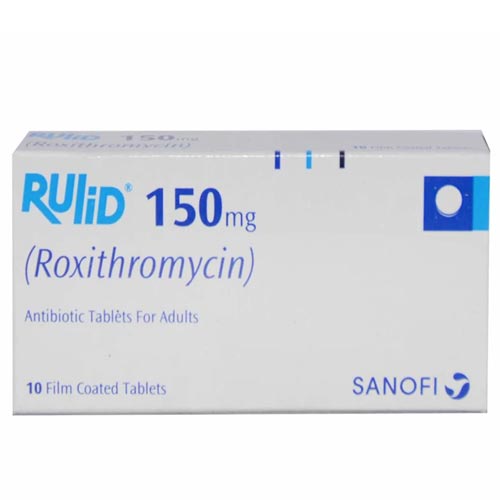Description
Roxithromycin is a semi-synthetic macrolide antibiotic. It is very similar in composition, chemical structure and mechanism of action to erythromycin, azithromycin, or clarithromycin.
Roxithromycin prevents bacteria from growing, by interfering with their protein synthesis. Roxithromycin binds to the subunit 50S of the bacterial ribosome, and thus inhibits the translocation of peptides.
Roxithromycin has similar antimicrobial spectrum as erythromycin, but is more effective against certain gram-negative bacteria, particularly Legionella pneumophila. It can treat respiratory tract, urinary and soft tissue infections. It is not available in the United States, but is available in Australia.
Used to treat respiratory tract, urinary and soft tissue infections.
Pharmacodynamics
Roxithromycin is a semi-synthetic macrolide antibiotic. It is very similar in composition, chemical structure and mechanism of action to erythromycin, azithromycin, or clarithromycin.
Roxithromycin has the following antibacterial spectrum in vitro: Streptococcus agalactiae, Streptococcus pneumoniae (Pneumococcus), Neisseria meningitides (Meningococcus), Listeria monocytogenes, Mycoplasma pneumoniae, Chlamydia trachomatis, Ureaplasma urealyticum, Legionella pneumophila, Helicobacter (Campylobacter), Gardnerella vaginalis, Bordetella pertussis, Moraxella catarrhalis (Branhamella Catarrhalis), and Haemophilus ducreyi.
Roxithromycin is highly concentrated in polymorphonuclear leukocytes and macrophages, achieving intracellular concentrations greater than those outside the cell. Roxithromycin enhances the adhesive and chemotactic functions of these cells which in the presence of infection produce phagocytosis and bacterial lysis. Roxithromycin also possesses intracellular bactericidal activity.
Mechanism of action
Roxithromycin prevents bacteria from growing, by interfering with their protein synthesis.
Roxithromycin binds to the subunit 50S of the bacterial ribosome, and thus inhibits the translocation of peptides. Roxithromycin has similar antimicrobial spectrum as erythromycin, but is more effective against certain gram-negative bacteria, particularly Legionella pneumophila.
Side effects
All medicines may cause side effects, but many people have no, or minor, side effects.Some medical conditions may interact with Roxithromycin.
Tell your doctor or pharmacist if you have any medical conditions.
Most common side-effects are gastrointestinal; diarrhoea, nausea, abdominal pain and vomiting.
Less common side-effects include headaches, rashes, abnormal liver function values and alteration in senses of smell and taste.
This is not a complete list of all side effects that may occur. If you have questions about side effects, contact your health care provider.


zoritoler imol –
I like this web blog very much so much fantastic information.